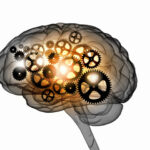Creativity and Depression
Some of the most famous celebrities have struggled with Depression. The list of these celebrities includes Jon Hamm, Owen Wilson, Gwyneth Paltrow, Princess Diana, Angelina Jolie, Zach Braff, Sheryl Crow, Anne Hathaway, J.K. Rowling, Hale Berry and Jim Carrey. In addition, many of the greatest artists and writers were also thought to have had Depression. They include: Michelangelo, Edgar Allen Poe, Mark Rothko, Charles Dickens, Fyodor Dostoevsky, T.S. Eliot, Paul Gauguin, Ernest Hemingway, Mark Twain, Sylvia Plath and Ernest Hemingway.
Symptoms of Depression
Despite the clear relationship between creativity and mood disorders (a topic for another article), Depression is an illness that affects millions of ordinary Americans every day. At any one time, 5% of the American population experiences Depression and about 12% of men and 20% of women will experience Depression at some point in their lives.
The most common symptom of Depression is a deep unwavering sense of sadness. Symptoms also include:
- Loss of interest in pleasurable activities
- Feelings of helplessness and hopelessness
- Difficulty concentrating
- Changes in sleep patterns (either increased sleep or insomnia)
- Feelings of fatigue and loss of energy
- Changes in appetite and eating
- Feelings of irritability and restlessness
- Feelings of worthlessness and unjustified guilt
- Difficulties with concentration and ability to think
- Recurring thoughts of death or suicide.
What Causes Depression?
Depression can be caused by a variety of factors, and doesn’t always emerge as a result of negative life situations such as losses, deaths or other adverse events. From a biochemical perspective, Depression is closely associated with deficits in the neurotransmitters of Serotonin and Norepinephrine. Personalities that are easily overwhelmed by stress, have low self-esteem or that are pessimistic are also at risk. Depression does have a genetic component and those with a family history are at greater risk.
It is important to remember that Depression is not the same as sadness. Sadness is a normal, healthy human emotion. Sadness turns into Depression when the above-mentioned symptoms appear and the feelings begin to cause a disturbance in a person’s daily functioning.
To meet the diagnosis of Major Depressive Disorder according to the Diagnostic and Statistical Manual of Mental Disorders (The ‘Bible’ of mental health disorders) the symptoms must persist for at least two weeks and five of the above-mentioned symptoms must appear nearly every day during that time. In addition, the feelings of sadness must appear for most of the day every day of the two weeks to be considered Depression.
While some of the specifics appear to be haphazardly constructed (a growing criticism of the Diagnostic and Statistical Manual of Mental Disorders), what emerges is that the feelings of sadness become Depression when their frequency and length increases, they branch out into more mental and physical disturbances and they begin to interfere with a person’s day to day life.
Depression is a real clinical disorder that has been studied comprehensively. The good thing is that there are incredibly effective treatments.
If you or someone you know is suffering with this, give us a call today @ 800-378-9354.




